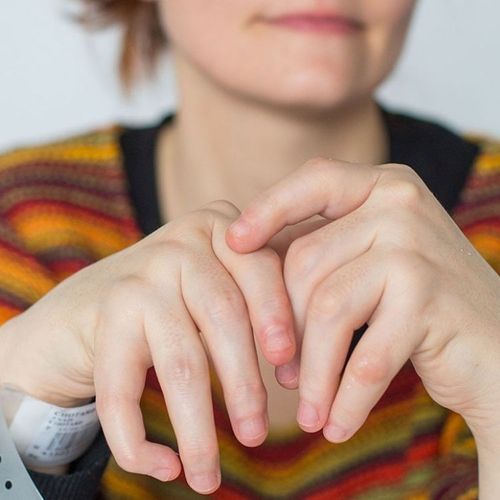Rheumatoid arthritis isn't just about achy joints. This condition can also affect other parts of the body.
In severe cases, rheumatoid arthritis can cause dangerous heart inflammation (pericarditis)... lung inflammation (pleurisy)...and sight-damaging eye inflammation (scleritis).
People who have rheumatoid arthritis should be treated early, not only to prevent permanent joint deformities but also to guard against the inflammation-related complications that are associated with the disorder. Most of the joint destruction caused by rheumatoid arthritis occurs in the first six to 12 months following diagnosis.
At one time, doctors mainly focused on relieving symptoms using pain medication.
Now: Drug therapies are aimed at curbing the progression of this debilitating disorder.
Are You At Risk?
Rheumatoid arthritis can occur at any age. Approximately 75% of patients are women, which suggests that hormones may play a role in the disease. Some researchers believe that a viral or bacterial infection may trigger the disorder in some patients. Smoking and stress are thought to contribute to rheumatoid arthritis-but not cause it.
Rheumatoid arthritis is characterized by joint stiffness and swelling, often in symmetrical patterns on both sides of the body. Fatigue and a low-grade fever may also occur.
New Treatments
Rheumatoid arthritis almost always requires drug therapy. Drugs can significantly reduce pain in more than half of the patients and offer some relief to the others.
People who have rheumatoid arthritis should seek treatment from a rheumatologist (a medical doctor who specializes in the treatment of diseases that involve the joints, muscles and associated structures).*
Rheumatologists typically prescribe nonsteroidal anti-inflammatory drugs (NSAIDs), such as ibuprofen (Advil) and naproxen (Aleve), or the corticosteroid prednisone, to control the pain and inflammation of this condition.
A majority of rheumatoid arthritis patients are also prescribed a medication known as a disease-modifying antirheumatic drug (DM ARD), which is designed to reduce pain and inflammation and slow the progression of the disease.
Nonbiological DMARDs ate synthetic medications that have been available for many years. These drugs reduce joint damage. Non-biological DMARDs include...
Methotrexate (Rheumatrex). This drug suppresses the immune system and minimizes joint destruction. Most patients who take methotrexate experience reduced pain and joint swelling within weeks. It is one of the best drugs for slowing the progression of rheumatoid arthritis.
Potential side effects include nausea, diarrhea and, in rare cases, liver scarring and/or inflammation. For this reason, periodic liver function tests are required.
Hydroxychloroquine (Plaquenil). This antimalarial drug suppresses immune attacks on the joints. It is often combined with methotrexate to try to achieve better results. Potential side effects include nausea and decreased appetite and, in rare cases, retinopathy, a disorder of the retina that results in vision impairment. If you take this drug, you should have regular eye exams.
Sulfasalazine (Azulfidine). This medication, often used for mild symptoms or in combination with other drugs for severe symptoms, can cause stomach upset, headache and, in some cases, a decrease in disease-fighting white blood cells.
Important: In addition to liver function tests, people who take nonbiological DMARDs require regular blood tests to monitor changes in blood counts.
Biological DMARDs resemble substances that are naturally present in the body. Most patients who take these newer, more specifically targeted drugs experience improvements in a short time-and some even report complete remission.
Three biologic agents are currently available that inhibit or block a cell protein known as TNF-alpha. TNF-alpha produces the inflammatory response.
Etanercept (Enbrel). It is usually injected once or twice weekly.
Adalimumab (Humira). It is given by injection once every two weeks, although it is sometimes given weekly.
Infliximab(Remicade). This drug is taken in combination with methotrexate. It is given by intravenous (IV) infusion in a doctor's office, usually once every eight weeks. At times, it can be given as frequently as every four weeks.
These drugs may increase the risk of infection. They can also reactivate tuberculosis (TB) in patients who were previously exposed-even if they never had symptoms. A TB skin test is required prior to starting therapy.
Drawback: These drugs are extremely expensive, costing $t3,000 to $30,000 annually, depending on the dose.
New Drug Choices
Several new drugs do not have the long-term data of the DMARDs, but they are an option for patients who don't respond to DMARDs.
Abatacept (Orencia). Approved by the US Food and Drug Administration (FDA) in December 2005, abatacept inhibits the activity of T-cells, immune cells that play a central role in joint inflammation. Abatacept may increase the risk of infection.
Rituximab (Rituxan). Used for 10 years to treat lymphoma, this drug was recently approved to treat rheumatoid arthritis. It reduces circulatory B-cells, a type of white blood cell that has been shown to play a role in the development of rheumatoid arthritis. Rituximab is given by IV infusion once every few months. It may also increase infection risk.
